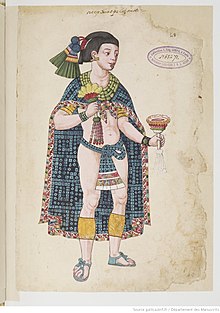

Eze bụ utu aha e nyere eze nwoke n'ọnọdụ dịgasị iche iche. Nwanyị yiri ya bụ eze nwanyị na-achị achị ("eze nwanyị na--achị achị / na-achị", n'adịghị ka eze nwanyị), ọ bụ ezie na n'ọnọdụ ụfọdụ, a na-enye ụmụ nwanyị dịka Mary, Eze nwanyị nke Hungary, na Jadwiga nke Poland na 1380s aha "Eze".
- In the context of prehistory, antiquity and contemporary indigenous peoples, the title may refer to tribal kingship. Germanic kingship is cognate with Indo-European traditions of tribal rulership (c.f. Indic rājan, Gothic reiks, and Old Irish rí, etc.).
- In the context of classical antiquity, king may translate in Latin as rex and in Greek as archon or basileus.
- In classical European feudalism, the title of king as the ruler of a kingdom is understood to be the highest rank in the feudal order, potentially subject, at least nominally, only to an emperor (harking back to the client kings of the Roman Republic and Roman Empire).
- In a modern context, the title may refer to the ruler of one of a number of modern monarchies (either absolute or constitutional). The title of king is used alongside other titles for monarchs: in the West, emperor, grand prince, prince, archduke, duke or grand duke, and in the Islamic world, malik, sultan, emir or hakim, etc.[1]
- The city-states of the Aztec Empire had a Tlatoani, which were kings of pre-Hispanic Mesoamerica. The Huey Tlatoani was the emperor of the Aztecs.[2]
Okwu eze nwekwara ike izo aka na eze, utu aha a na-enye di nke eze nwanyị na-achị mgbe ụfọdụ, mana utu aha nke nwa eze bụ ihe a na-ahụkarị.
- ↑ Pine (1992). Titles: How the King became His Majesty. New York: Barnes & Noble. ISBN 978-1-56619-085-5.
- ↑ History Crunch Writers. Aztec Emperors (Huey Tlatoani) (en). History Crunch - History Articles, Summaries, Biographies, Resources and More. Retrieved on 18 April 2021.

